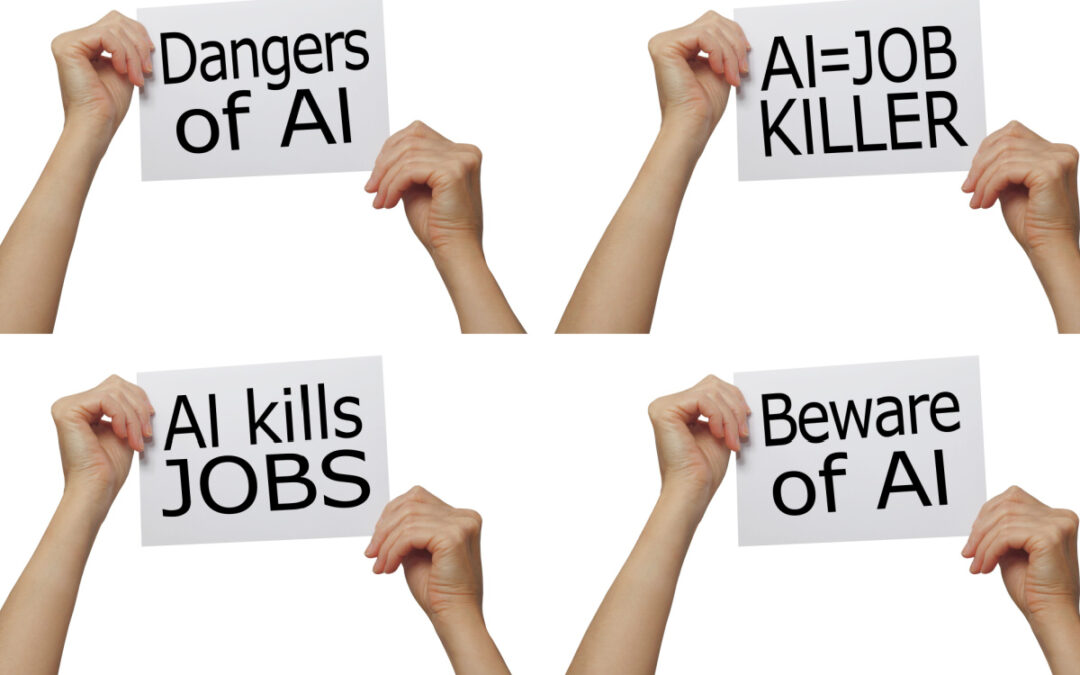Introduction: Why Is There a Growing Fear of AI?
In the heart of American entrepreneurship, a silent tension is growing. The technological tide is bringing in AI (Artificial Intelligence), a force already reshaping the business landscape. But for small business owners, particularly in the U.S., this wave is met with mixed emotions. This article dives deep into the apprehensions, often termed the “fear of AI,” that prevent these innovators from harnessing the full potential of AI technology.
The Journey of AI: From Fiction to Business Reality
AI isn’t new. Its journey began in the realms of science fiction, only to materialize in real-world applications decades later. Today, AI’s footprint is evident across sectors, from automated customer service to intricate data analysis, shaping success stories in businesses worldwide. Yet, the fear of AI lingers, especially among small enterprises.
Leveraging AI: The Unseen Advantages for Small Ventures
AI is more than automation. It’s about:
- Efficiency Beyond Human Capability: Streamlining operations, reducing workload, and optimizing business processes.
- Insights and Foresights: Turning raw data into actionable strategies, offering a competitive edge that manual analysis cannot match.
- Personalized Customer Journeys: Tailoring client interactions, creating unique marketing campaigns that resonate on a personal level.
- Scaling With Ease: Providing tools that accommodate growth without the constant need for human intervention.
Despite these advantages, the fear of AI in the entrepreneurial community remains a significant barrier.
Decoding the Fear of AI: What Scares American Entrepreneurs?
The hesitation isn’t baseless. Several factors contribute to the fear of AI:
- High Costs, High Risks: The assumption that AI integration is costly and financially risky, especially for small budgets.
- Navigating the Technical Maze: A perceived lack of expertise to understand or manage AI systems.
- The Unpredictable Outcome: Uncertainty and lack of control over business outcomes post-integration.
- Robots Stealing Jobs: The age-old fear of technology, leading to job displacement and dehumanization of services.
- Trusting the Machine: Reluctance to depend on non-human entities for business-critical decisions.
These fears are genuine, but they overshadow the risk of stagnation.
The Risk of Resistance: What Happens Without AI?
Choosing to ignore AI can lead to:
- Losing Competitive Ground: As competitors advance, non-adopters lag.
- Persisting Inefficiencies: Continued reliance on error-prone, traditional methods.
- Untapped Data Goldmine: Missed opportunities hidden within unanalyzed data.
- Stunted Growth: Limited business expansion capabilities due to lack of automation and innovation.
The fear of AI, therefore, is a double-edged sword, threatening progress from both sides.
Conquering the Fear: Embracing AI Step by Step
Change is challenging but necessary. Here’s how to mitigate the fear of AI:
- Learn the AI Language: Engage in educational opportunities to understand AI’s scope and potential.
- Seek the Specialists: Collaborate with AI professionals to guide the integration process.
- Baby Steps: Gradually introduce AI elements into business operations to monitor and control outcomes.
- Success Stories: Network with peers who have navigated the AI integration journey successfully.
- Funding the Future: Explore grants and subsidies designed to cushion the financial impact of technological adoption.
By taking informed steps, the fear of AI can transform into strategic caution, guiding businesses toward sustainable innovation.
Conclusion: Beyond the Fear of AI
The fear of AI, while deeply rooted, is not insurmountable. For American small business owners and coaches, the future hinges on adapting to technological shifts. It’s about viewing AI not as a threat, but as a tool crafted by human ingenuity to enhance our capabilities, not replace them. The journey begins with education, understanding, and a gradual embrace of the AI era. The question isn’t whether your business can afford to adopt AI, but rather, can it afford not to?
—
Are you concerned or overwhelmed about using AI? Then get your free 15-minute strategy call with us here.


Recent Comments